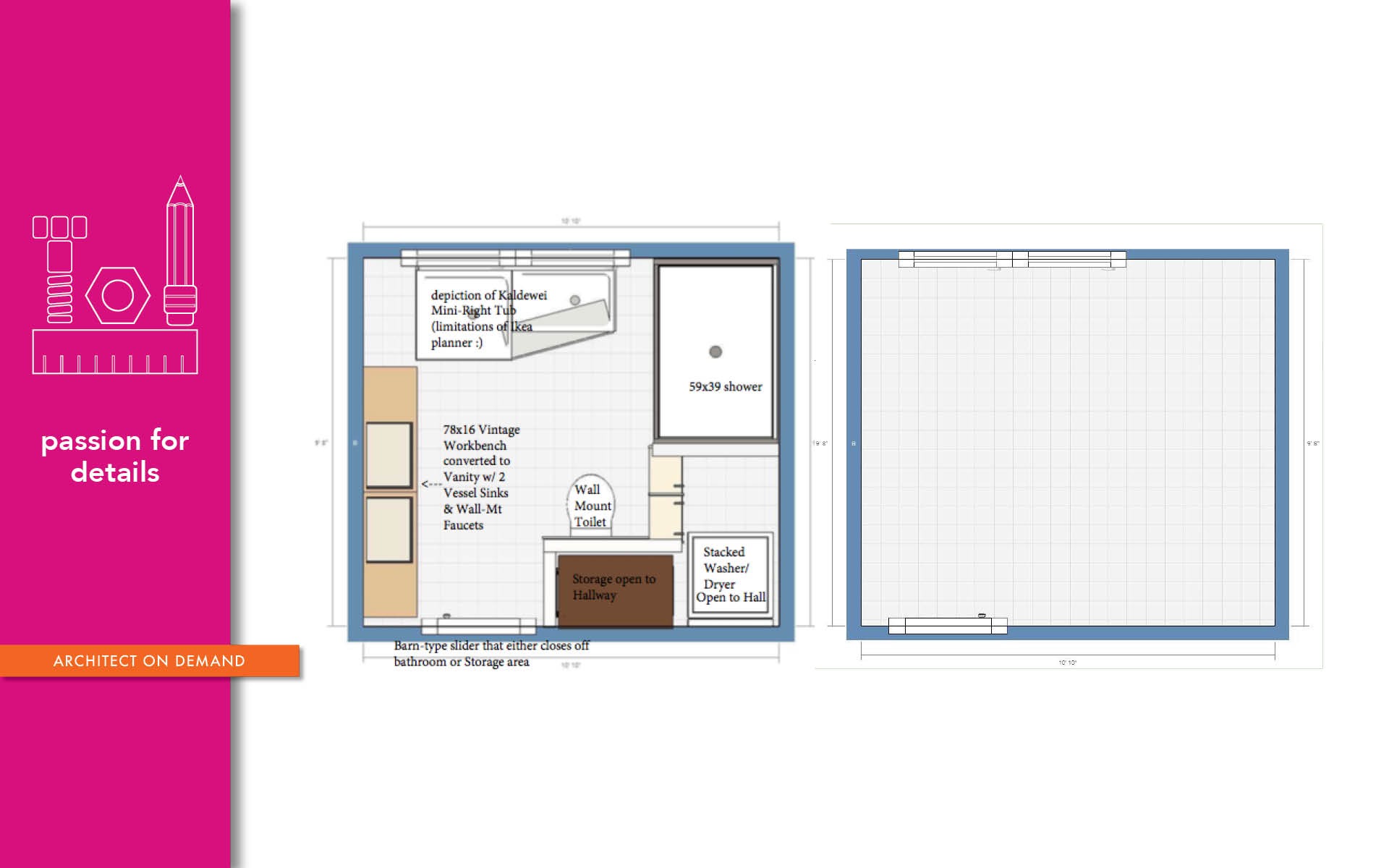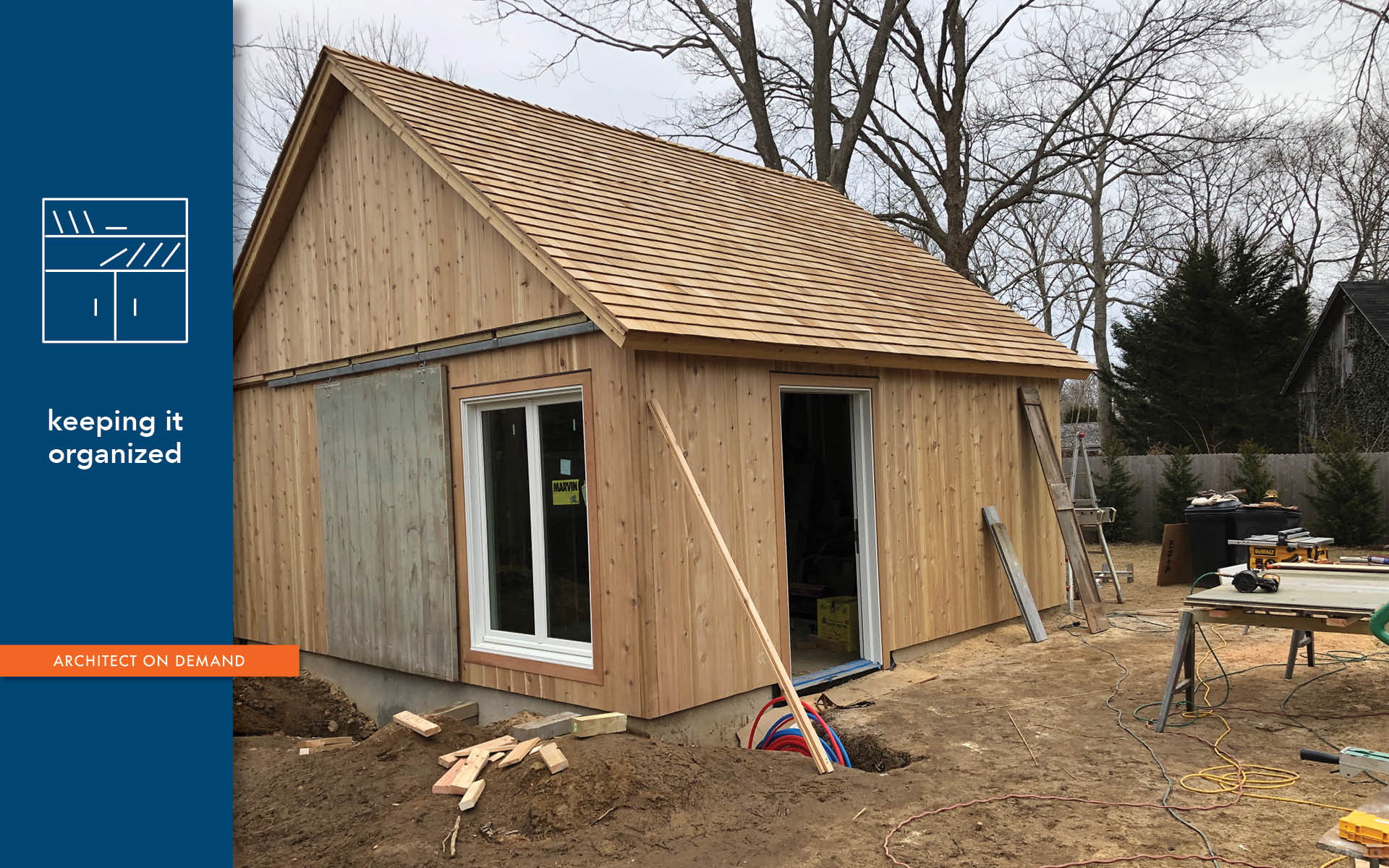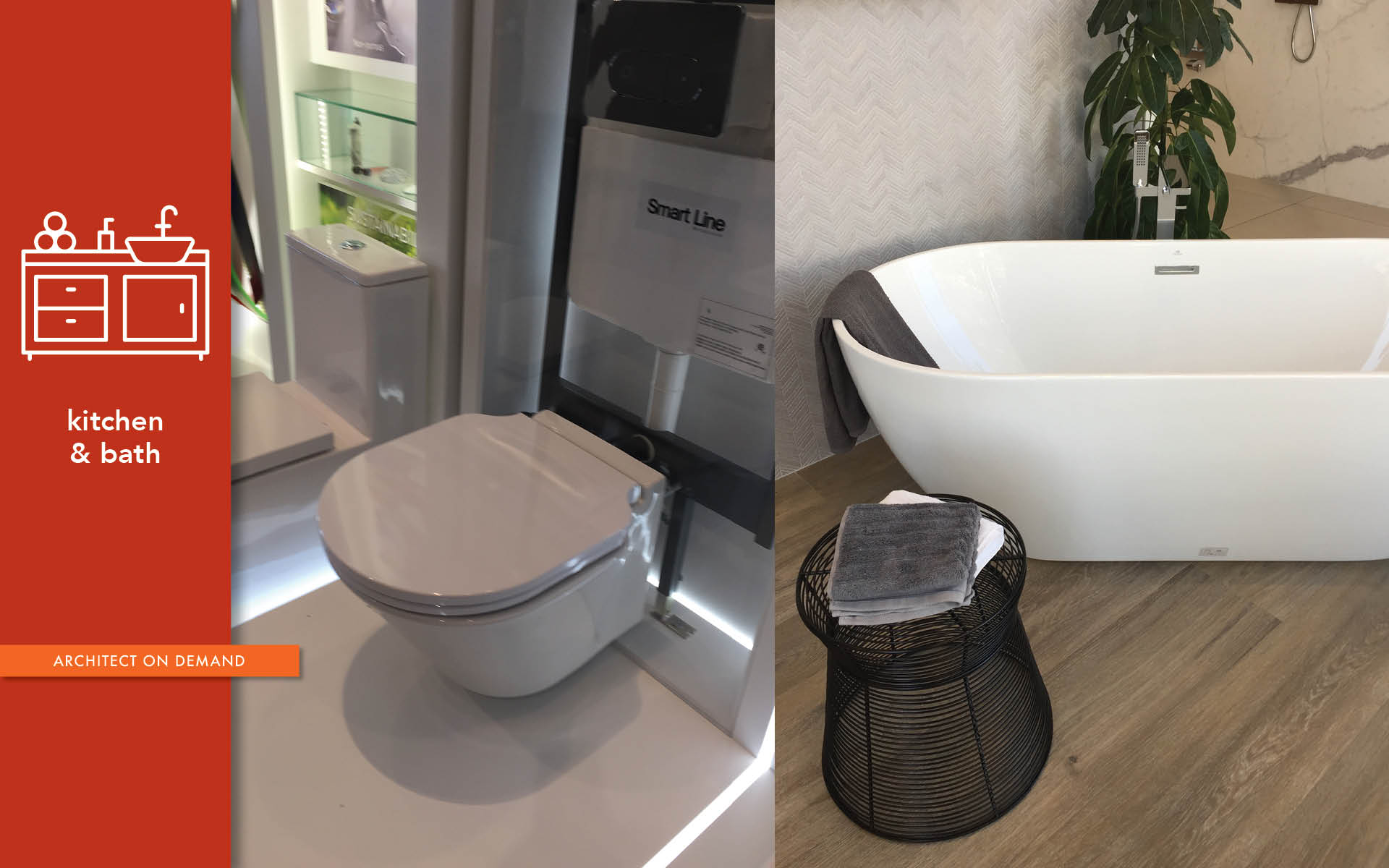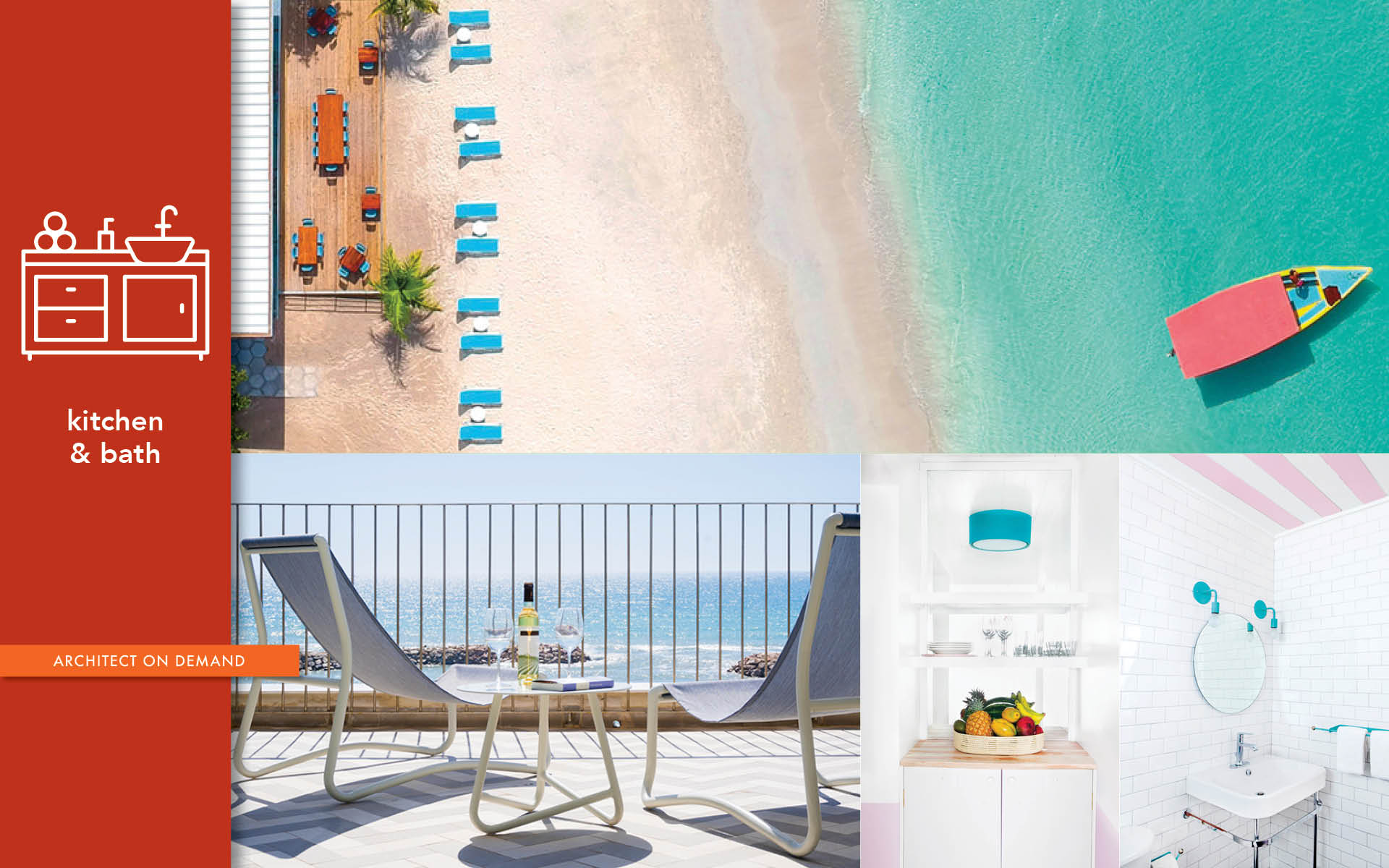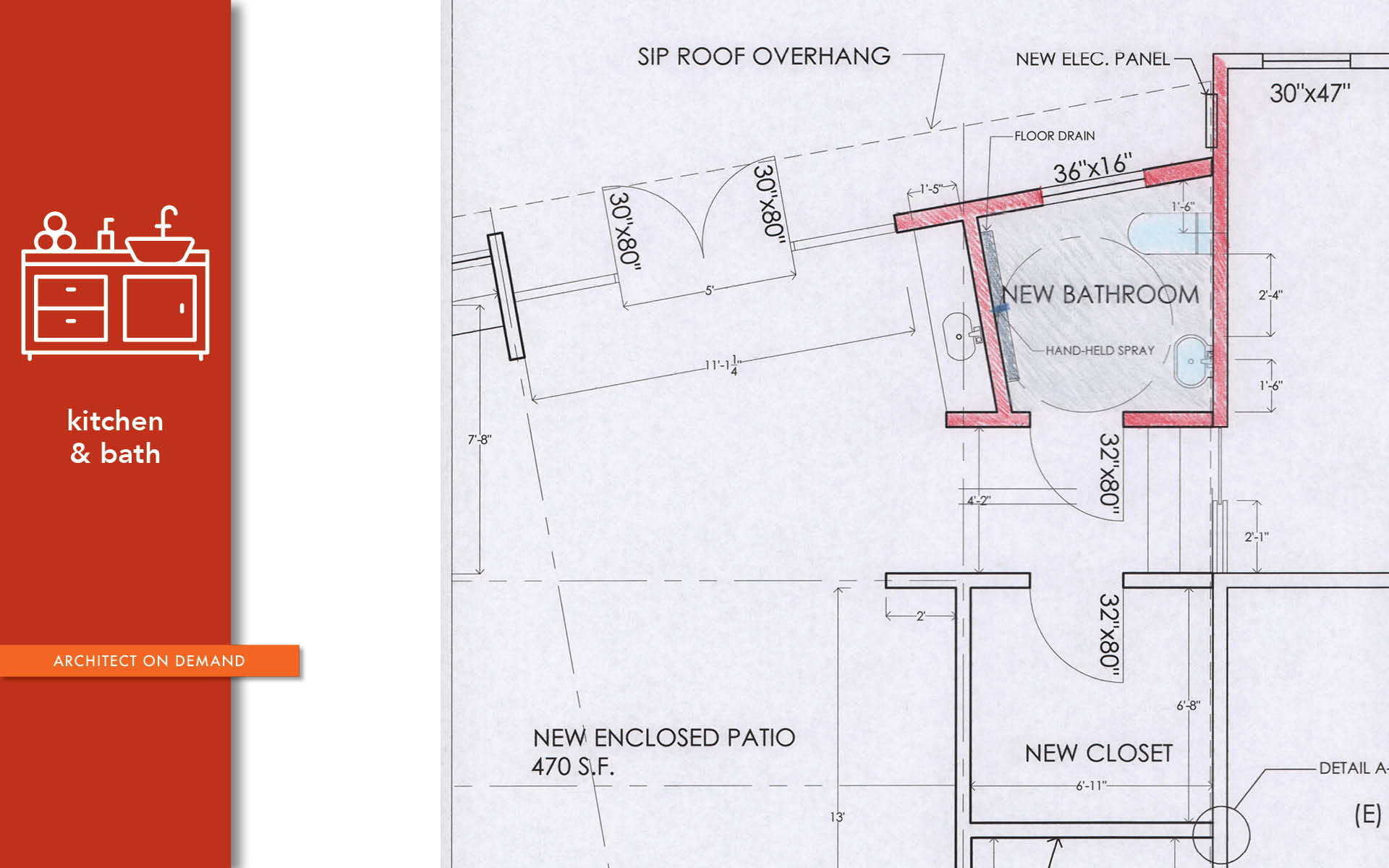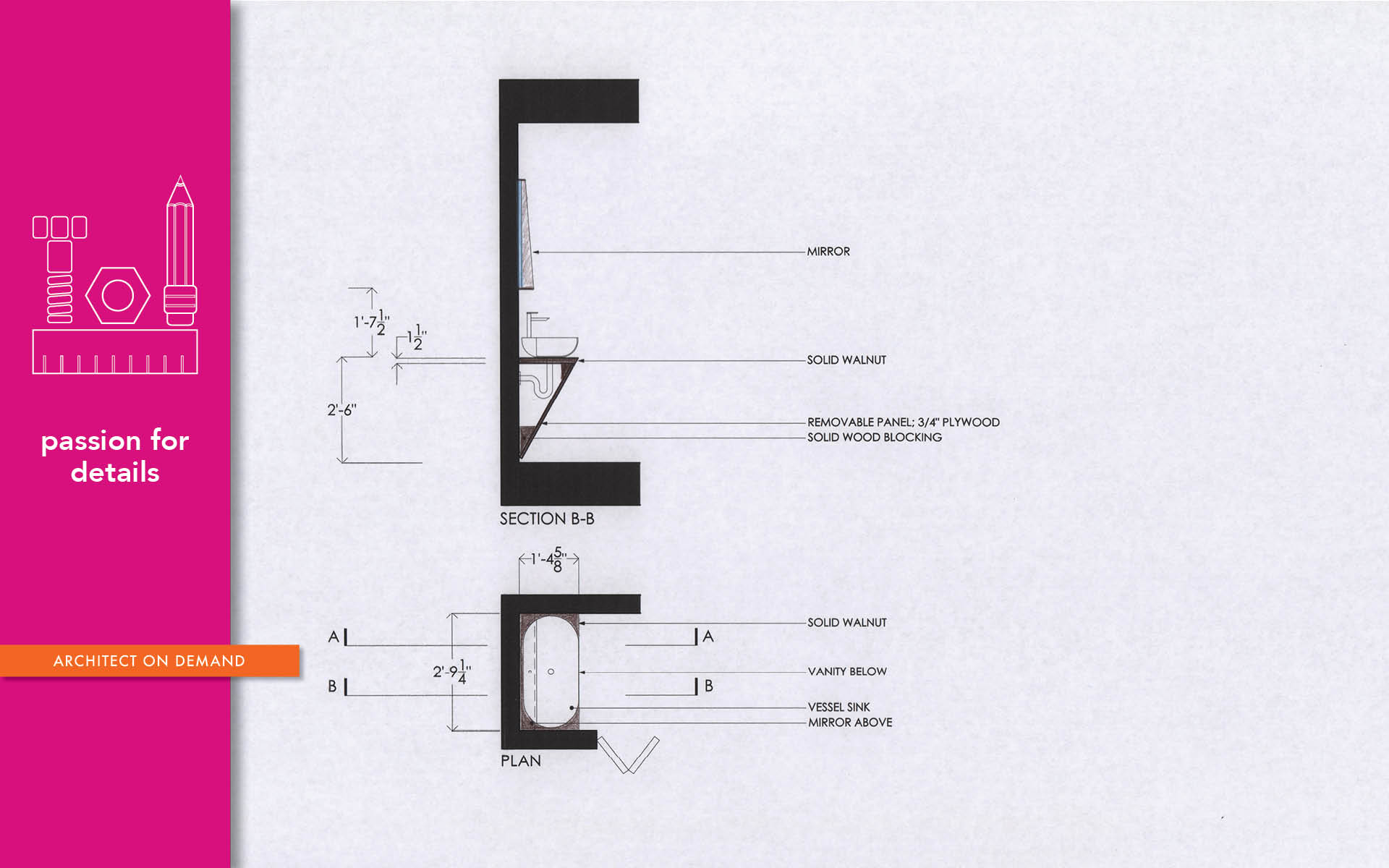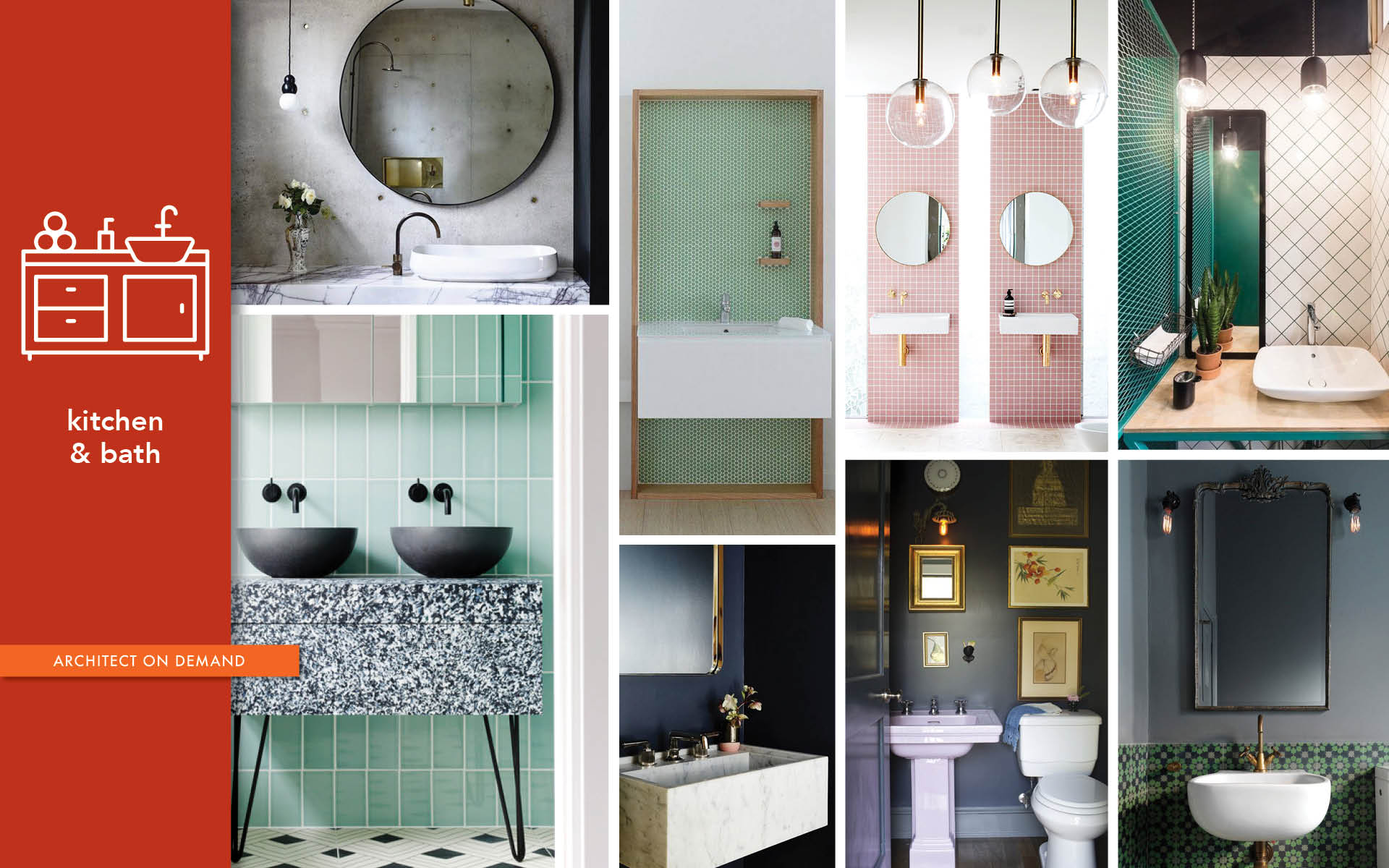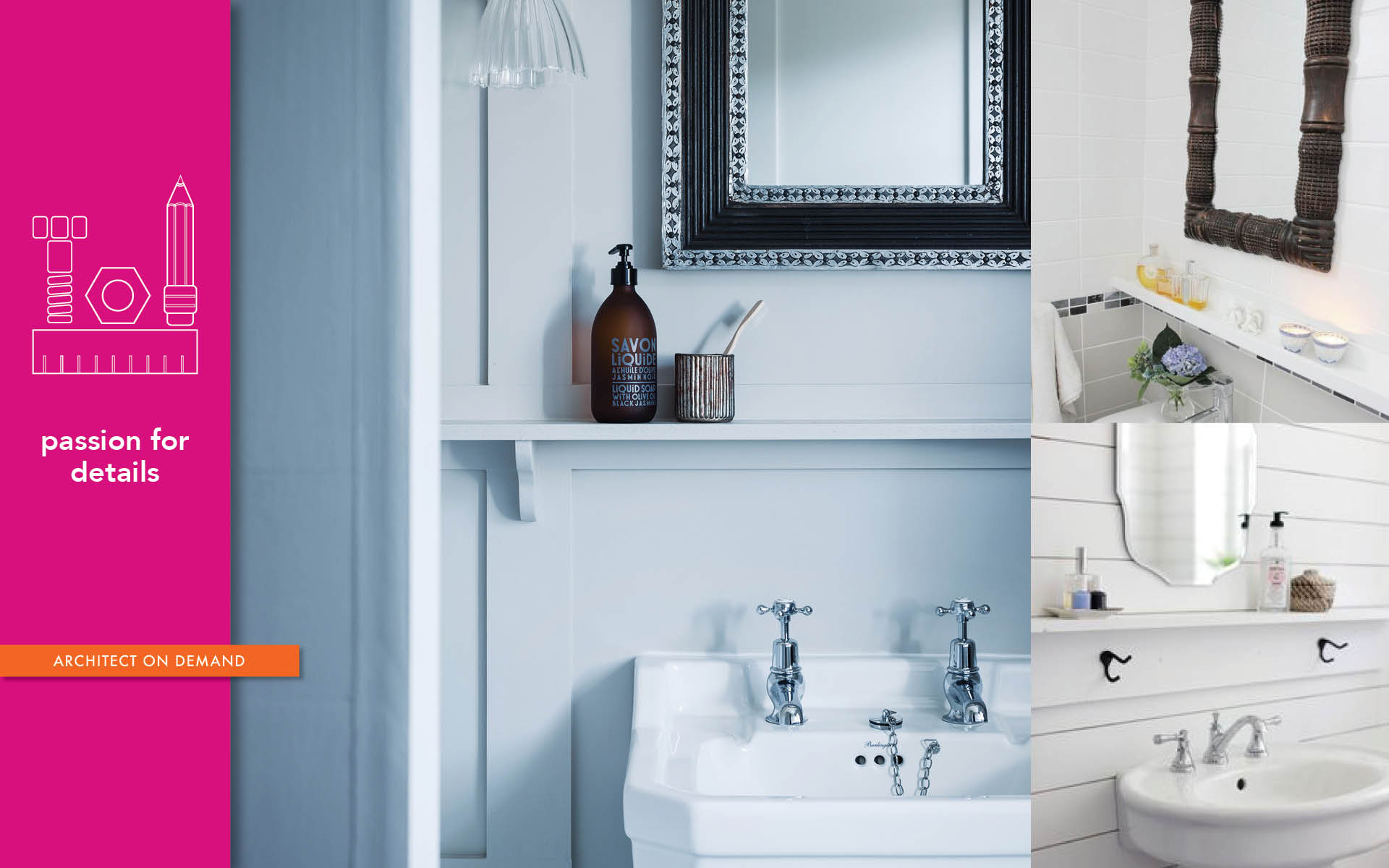A DIY Ally client wrote: “Hello Alla, I’ve much enjoyed your website, particularly your 11-step eBook and blog entries. I have a space planning question. My husband and I are downsizing from a 2300 sf home to a 1948 ranch 3BR/1BA 1100 sf home. Every sf needs to count. Over the 5+ years we’ve owned the home, I believe we’ve pretty much figured out how to maximize the layout; however, a recent decision to completely re-plumb the house allows us the
Sorry, I haven’t been posting. Was teaching my DIY Like an Architect workshop at Art Center last two weekends. Besides, this project in NY is keeping me very busy. Performing construction supervision remotely — discussing every little detail with the contractor over the phone in addition to emailing a lot of drawings and instructions. Most of the design details I am generating right now were not required for the submission to the Building Department. Plan Examiners are concerned with public safety, not aesthetics.
In my previous post I wrote about a master bath renovation as work in progress. Since then, we have settled on a layout and are in the process of selecting bathroom fixtures and tile. It’s a good opportunity to test the plan while focusing on nitty-gritty. The agreed-upon layout features a brand new shower and a tub in their existing locations. It seems most practical given the issue of the drastically sloping ceiling. There just isn’t enough headroom at the bay window for a shower.
A generic statement, such as: “In this bright white modern space, the architect used clean lines, a minimalist palette, and simple shapes to create…” can succinctly describe my intentions for a tiny bathroom and adjoining kitchenette I am in the process of planning. Although it sounds formulaic, it’s anything but. Trends come and go; the object is to design with the site-specific requirements in mind.
I am in the process of designing an enclosed patio attached to an existing house. The added space will have an outdoor bathroom. We are making it wheelchair accessible; it consists of a toilet, a sink, and a hand-held spray (without a showerhead). Since there’s no shower enclosure per se, the entire bathroom will function as a shower, which makes it a “wet room.”
A couple of weeks ago I wrote about some of my design ideas for a powder room makeover. Aside from a custom wedge-shaped vanity cabinet, I’ve proposed a very straightforward, sensible fix.
My friends are tired of the way their powder room looks and feels these days. They want to freshen it up, change the fixtures, replace a misbehaving pocket door. I think they should also redesign flooring and lighting. No big deal, right? But to them, even thinking about it feels like a huge undertaking. In this post I’ll show how to do it in 5 easy steps.
A potential DIY Ally client asked me if I enjoy working out little details. She wrote: “Hello, I am remodeling a 1938 bath in Washington DC. Have worked with architects previously, so attempting this without an architect, with a very trustworthy contractor. But he's not a designer, and I want to do something unconventional (from a standard builder point of view) with a long narrow shelf across the width of the room.”
When it comes to selecting bathroom fixtures, the toilet is one of the essential components. Frankly, its appearance has to be taken very seriously — it can ruin or enhance the over-all look as well as functionality of a bathroom. It’s critical to pick a model that is pleasing to the eye, easy to clean, and sustainable.
A potential client (she is in her early seventies) recently shared with me that her contractor would not hear of a curbless walk-in shower. He talked her out of it. As DIY Ally, I would like to make a case for it. It’s quite doable and is certainly worth the effort.


